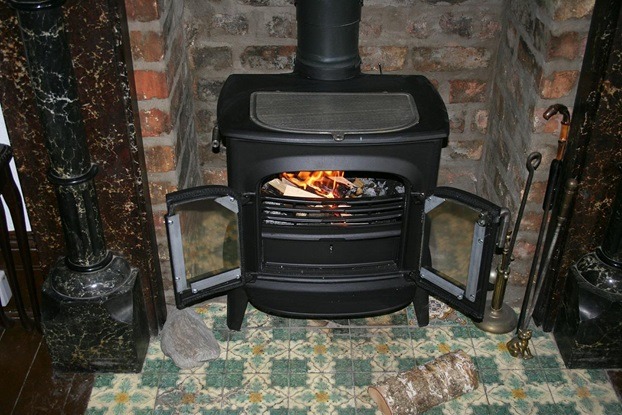Wood stones have existed for quite a while now. This wonderful home feature even dates back to the 1500s.
In 1557, the wood-burning stove became patented. Check out this post to learn other cool facts about the history of wood-burning stoves. Now, several years later, this home feature is still being used in homes around the home, although some changes have been made.
In the United States, this home feature is more popular in places that often have very cold winters. With the changes made to the original design, they are even more efficient than they used to be.
If you are looking to get a wood stove in your home, then it is only proper that you find out all you can about it. This is why, below, we will talk about some important things about wood stoves. Knowing these things will help you make an informed choice when you go shopping for this equipment.
How They Work
Typically, a wood stove is made with steel, stone, and cast iron. Just as you can guess from their name, they are used to burn wood. They are usually made of the following parts:
- Stove
- Baffle
- Damper
- Chimney
When a fire is made in the stove, the fire heats the room. Then the smoke gets drawn out through the chimney. You can control the airflow with the damper. Finally, the baffle (could be more than one based on the stove’s size and design) increases the fire gases’ combustion time. This function is very vital because half-combusted gas is a very bad air pollutant.
Efficiency
When the weather becomes very chilly, you’d want to warm your hands by the fireplace. You probably see yourself sitting on your couch and facing your roaring fireplace. While fireplaces are very cozy, they are somewhat inefficient when it comes to heating a space. These stoves are typically a better alternative if you are considering the efficiency of heating a space.
Not only are they efficient, but they are also environmentally friendlier than they used to be. In 1988, The Environmental Protection Agency enacted wood stoves energy efficiency standards. Since this enactment, the efficiency of this home feature has significantly improved.
Older wood-burning stoves do not have a good reputation though. They used to be smoky and difficult to control. However, the ones manufactured now adhere strictly to the EPA emissions standards. Visit https://www.epa.gov/ to learn more about these standards.
These standards were put in place to make sure that these stoves efficiently use firewood without venting smoke and other harmful pollutants into houses. As of May 2020, these standards became even stricter. So, you have nothing to fear if you decide to get a wood stove in your home.
Types
Wood-burning stoves are of two types: non-catalytic and catalytic. Both of them are made to meet EPA emission standards. However, the main difference between them is their heat output and maintenance levels. Let’s take a closer look at both of them.
Catalytic
Wood-burning stoves that fall under this category usually have a ceramic part shaped like a honeycomb. This component is used to burn particles and gases from the burning wood. By burning these pollutants, the stove generates more heat but fewer emissions.
While efficiency is increased, there’s a catch to it. The maintenance level of catalytic stoves is higher, so they have to be frequently maintained. The component that does the combustion job (the part shaped like a honeycomb) has to be regularly inspected and replaced periodically.
But if maintained properly, this combustion piece should last for about 6 seasons. To properly maintain this type of stove, ensure you clean the combustor plate at least once per week. This should be increased to twice weekly during cold seasons. Also, make sure you regularly inspect the chimney and stove and ensure you burn only the right materials.
Non-Catalytic
These are cheaper than catalytic stoves; their maintenance level is also relatively low. However, their emission production is more than what their catalytic versions produce. Despite this, they are still built to meet the EPA emission standards. This is why they must meet the EPA requirements for stove certification.
They aren’t maintenance-free, but their maintenance level isn’t as high as their counterpart. To keep wood stoves venting to a minimum, they have to be regularly inspected. You may also need to replace some of its components as they are bound to wear out over time.
Conclusion
A wood stove may be just what you need for your home to keep you warm during cold nights. However, due to the bad reps of the older versions, you may be somewhat skeptical. The good news is, you don’t have to be. This is because there are now standards that have to be met. This has made the newer versions of this home feature not just more efficient but also eco-friendly.

